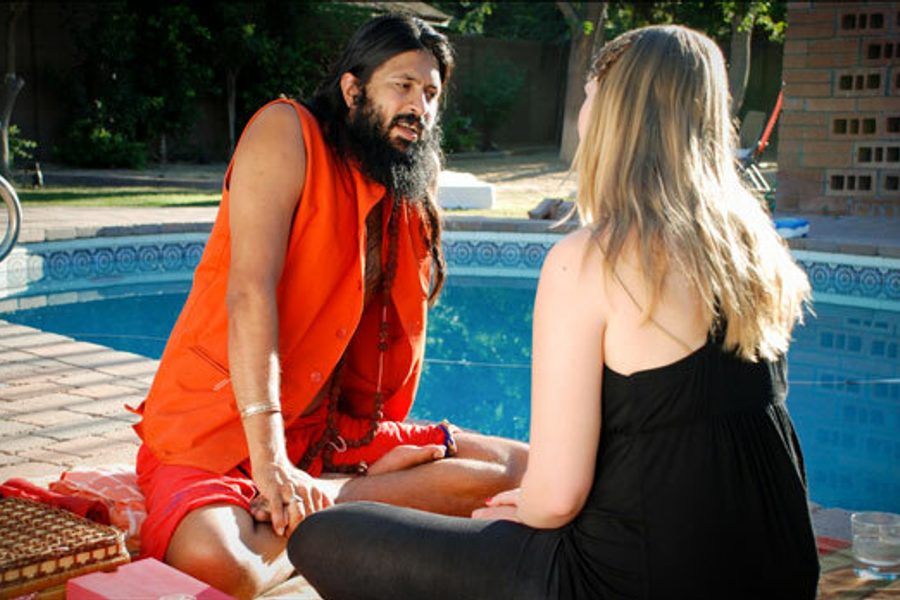
In the pop sphere, zombie may be the new vampire, but with the release of George A. Romero’s Survival of the Dead, you have to truly wonder what in the gamey name of Lazarus is going on. This is, after all, the sixth zombie film from one filmmaker, amid a recent cataract that has included big-budget remakes of Romero’s older films (Dawn of the Dead, Day of the Dead), loads of zombie indies (with titles like Dead and Breakfast), an upcoming TV series (Frank Darabont’s The Walking Dead), and of course zombie farces (Shaun of the Dead, Zombieland), the spry likes of which should’ve signaled the end of the genre’s new heyday.
Unfortunately, it shows no sign of waning, and it’s Romero’s doing. With 1968’s Night of the Living Dead–still a roughshod masterpiece of anxiety that may inadvertently be the best film “about” Vietnam made during the war – Romero introduced the flesh-eating, white-pupiled grave-stumbler, and the rather trite rules that apply to them. (Why only head shots? Why not?) Despite the success of his first sequel, Dawn of the Dead (1978), Romero and his living-dead paradigm spent more than 20 years in neutral, and then suddenly zombies became fashionable again, reemerging after 9/11. Coincidence or social unease? Are zombies – gross, easily killed people who aren’t really people anymore – our way of neutralizing the haunted experience of mass death on American soil?
It’s a thing worth pondering, especially since zombies are not big business in any other culture on Earth. (East Asian countries can’t shake their own, more trad brand of nagging reconstitution – ghosts.) Romero’s new film is essentially a footnote to the phenomenon. After flirting with political commentary ever so gingerly in Land of the Dead(2005), the filmmaker has quarantined his post-apocalyptic scenario to Plum Island, Del., an odd bucolic horse-farm haven where two Irish-accented patriarchs exercise their lifelong Hatfield-McCoy feud over what to do with the zombies (kill them or try to treat them humanely and when that doesn’t work, kill them). A brace of mercenary Marines looking for sanctuary wander into the fray, providing Romero the opportunity to indulge in the lame tough-guy comic book dialogue for which he’s become infamous. In fact, in more than 40 years Romero has not improved much as a moviemaker – the acting in his film is overboiled and risible, the dramatic set-ups stiff, the jokes generally dreadful.
But Romero’s audience couldn’t care less, of course, or else they’d notice the self-contradicting title, or the fact that putrefying corpses, even if they could walk around, wouldn’t bleed when you shot them, much less explode in big gory ejaculations. Ah, well. The very paradigm of a Romero zombie plague forbids everything but visceral reaction, most often to the spectacle of shambling humanoids being butchered or blasted as if they were so many swatted flies.
That’s the creepy part, I think. In the beginning, Romero’s dynamic was about fearing the onslaught of unreasonable hunger. By now, it has evolved into a running string of gags: how many cool, violent, effortless ways can you kill a zombie? There’s an amorality in the new zombie films that echoes the anonymous, consequence-free killing tasks provided by video games: feel free, these cultural routines tell us, to shotgun and chainsaw as many people as you want, no cost incurred and no responsibility necessary. In recent years the gaming industry – dominated by first-person and third-person shooters, from the Doom franchise to Grand Theft Auto and Call of Duty – has routinely occupied more eyeballs and inhaled more dollars than the movie industry, and may in fact qualify as the new generation’s predominant mode of culture. Chances are, in 20 years America will be more or less run by men who learned about moral choices and the cost of violence by playing Halo.
Maybe more than the shock treatment of 9/11, that’s why Romero’s concept has arisen anew – we’re in a new age of disconnection. While our children do not merely witness thousands of deaths on TV every year but do the virtual killing themselves, we wage war in which a large wedge of the destruction is performed by computers targeting bombs or by console warriors guiding helicopter strikes from remote locations, as in the Wikileaks video of the killing of a Reuters cameraman in Baghdad.
A huge chunk of Americans say they require guns for cap-in-the-ass self-defense they’re much more likely to fantasize about than perform. Screens dictate our experience, with first-person-shooters or zombie movies or snuff police clips on YouTube. We like the killing, but do not want it to ruin our weekend or our Monday Night Football by being “real.” Movies aren’t real, but a character’s death in a movie, even in a torture-porn sequel, is supposed to affect us somehow, right? Watching someone take a power tool to an already-dead cadaver is as close to no-impact homicide as we will ever get.









